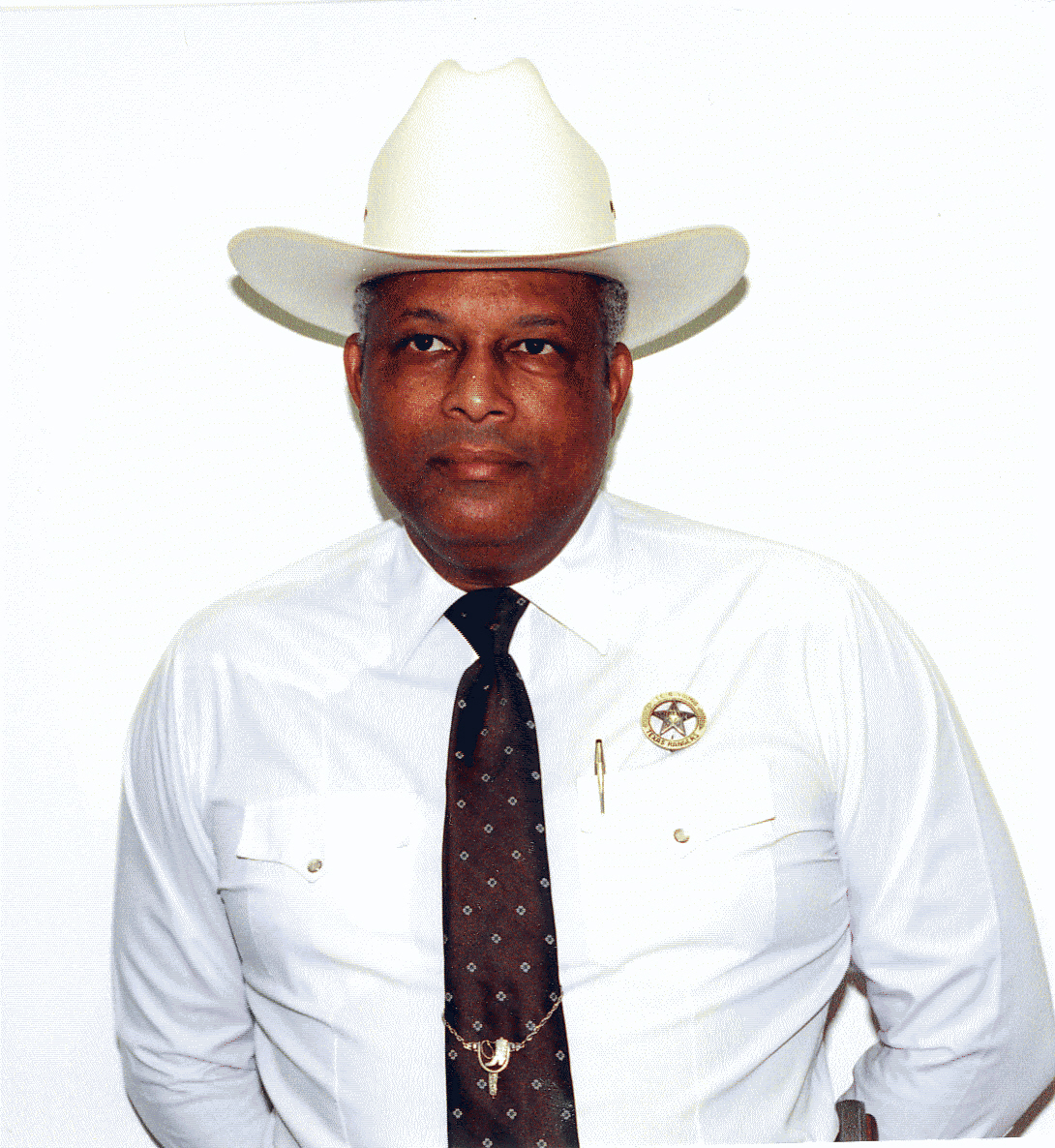In 1988, Lee Roy Young Jr. became the first Black Texas Ranger. Rangers are a branch of the Texas Department of Public Safety (DPS). Young was born in Del Rio, Texas on January 8, 1947. His mother was Abby Ward and father was Lee Roy Young. As a child, Young was raised by his grandparents, Ceriella Ward and Reynaldo Aguilar. He is of Black Seminole heritage. Originally in Florida, some Black Seminoles settled along the Rio Grande and in the 19th Century were famous as scouts for Buffalo Soldier units.
Young grew up in Brackettville, Texas along the Rio Grande and attended school there until his sophomore year. He then moved to Del Rio, Texas for the last two years of High School. Young was interested in science and played baseball.
In 1966, Young graduated from Del Rio High School and joined the US Navy where he worked as an electrician and was stationed on the ship USS Samuel Gompers. Young was a part of the original crew of this new Navy vessel, making him a “plank owner.” Navy tradition is when the ship is decommissioned, a plank owner would be issued a plank from the ship’s deck. In 1970, Young completed his Naval Service.
Interested in law enforcement, Young applied to Border Patrol but then decided to finish college before his interview took place. In 1971 he enrolled in Southwest Texas Junior College in Uvalde, earning an AA degree two years later. He then attended Sam Houston State University in Huntsville.
Young became interested in joining DPS because he had friends who were state troopers. In September 1973 at 26 years of age, he joined DPS to become a state trooper. He then attended the eighteen-week DPS Academy program in Austin where his class began with 107 recruits but only 73 including Young, graduated in February 1974.
Young’s first duty station as a state trooper was the State Capitol in Austin. While working, he continued his education and finished his degree at the University of Texas, Austin. Young majored in Sociology with a specialization in Criminology. Two years later he married his wife, Mary, on April 24th, 1976.
Young served as a Trooper for 15 years in Austin, Bryan, Eagle Pass, and his hometown, Del Rio. In 1988 he was promoted to Texas Ranger, the most elite force in the DPS. Rangers trace their lineage to 1823 when Stephen F. Austin formed and employed rangers to protect Anglo settlers on the Texas frontier. Their current duties consist of criminal and special investigations, apprehending wanted felons, suppressing major disturbances, protection of life and property, and assisting other law enforcement agencies. Young entered the highly competitive process that all DPS candidates face to become a Texas Ranger. He met the requirement of having at least eight years of law enforcement experience. Only four candidates, including Young, were chosen out of the 80 applicants who took the written and oral exams.
At the time of his selection as a Ranger, Young was 41 years old and was an investigator with the DPS Criminal Intelligence Service in San Antonio. His first duty station as a Ranger was in Garland, Texas.
In 2003, Young retired from the Texas Rangers and opened his own private investigation agency. He also worked as an ambassador for the McKinney Chamber of Commerce.
Do you find this information helpful? A small donation would help us keep this available to all. Forego a bottle of soda and donate its cost to us for the information you just learned, and feel good about helping to make it available to everyone.
BlackPast.org is a 501(c)(3) non-profit and our EIN is 26-1625373. Your donation is fully tax-deductible.
Stephen Hardin, The Texas Rangers (London: Osprey Publishing, 1991); Brandi Hart, “Living the life of a Texas Ranger,” McKinney Courier-Gazette, https://starlocalmedia.com/mckinneycouriergazette/news/living-the-life-of-a-texas-ranger/article_f50e6e26-8687-56c1-a91b-386cecb9c832.html; Bob Lowry, “First black Texas Ranger appointed,” UPI Archives, https://www.upi.com/Archives/1988/07/29/First-black-Texas-Ranger-appointed/7752586152000/.
Your support is crucial to our mission.
Donate today to help us advance Black history education and foster a more inclusive understanding of our shared cultural heritage.

